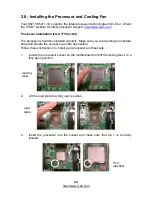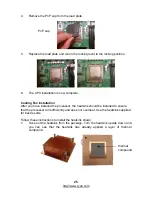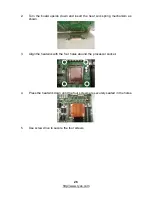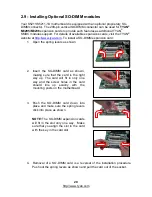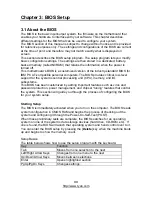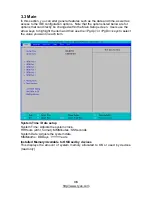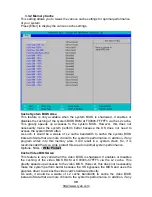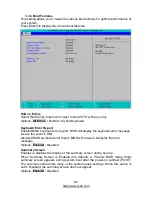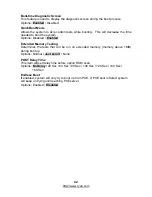
38
http://www.tyan.com
When LBA is turned on, the BIOS will enable geometry translation. This translation
may be done in the same way that it is done in Extended CHS or large mode, or it
may be done using a different algorithm called LBA-assist translation. The
translated geometry is still what is presented to the operating system for use in Int
13h calls. The difference between LBA and ECHS is that when using ECHS the
BIOS translates the parameters used by these calls from the translated geometry to
the drive's logical geometry. With LBA, it translates from the translated geometry
directly into a logical block (sector) number.
LBA has in recent years become the dominant form of hard disk addressing. Since
the 8.4 GB limit of the Int13h interface was reached, it became impossible to
express the geometry of large hard disks using cylinder, head and sector numbers,
translated or not, while remaining below the Int13h limits of 1,024 cylinders, 256
heads and 63 sectors. Therefore, modern drives are no longer specified in terms of
classical geometry, but rather in terms of their total number of user data sectors and
addressed using LBA.
Options: Disabled /
Enabled
32 Bit I/O
Enables or disables 32 bit data transfer mode.
Enabling this option causes the PCI hard disk interface controller to bundle together
two 16-bit chunks of data from the drive into a 32-bit group, which is then
transmitted to the processor or memory. This results in a small performance
increase.
Options: Enabled /
Disabled
Transfer Mode
These modes determine the speed at which data is transferred to and from the drive.
The Auto option automatically determines the correct transfer rates.
Options: Auto / Standard / Fast PIO 1 / Fast PIO 2 / Fast PIO 3 / Fast PIO 4 / FPIO
3 / DMA 1 /
FPIO 4 / DMA 2
Ultra DMA Mode
Enables or disables Ultra DMA Mode.
Ultra DMA (UDMA, or, more accurately, Ultra DMA/33) is a protocol for transferring
data between a hard disk drive through the computer's data paths (or bus) to the
computer's random access memory (RAM). The Ultra DMA/33 protocol transfers
data in burst mode at a rate of 33.3 MBps (megabytes per second), twice as fast as
the previous Direct Memory Access (DMA) interface.
Ultra DMA support in your computer means that it will boot (start) and open new
applications more quickly. It will also help users of graphics-intensive and other
applications that require large amounts of access to data on the hard drive. Ultra
DMA uses Cyclical Redundancy Checking (CRC), offering a new level of data
protection.
Because the Ultra DMA protocol is designed to work with legacy application PIO
and DMA protocols, it can be added to many existing computers by installing an
Ultra DMA/33 Peripheral Component Interconnect adapter card. Ultra DMA uses the
same 40-pin Integrated Drive Electronics interface cable as PIO and DMA.
Options: Disabled
/
Mode 0 / Mode 1 / Mode 2 /
Mode 5
Summary of Contents for S5211
Page 4: ...4 http www tyan com NOTE ...
Page 14: ...14 http www tyan com FAN1 TYFP1 FAN2 FAN3 FAN6 FAN4 TYFP2 FAN5 ...
Page 16: ...16 http www tyan com COM2 IPMB USB2 USB1 J10 J23 ...
Page 18: ...18 http www tyan com JP4 J24 SATA3 SATA4 SATA2 SATA1 SATA5 SATA0 CMOS ...
Page 32: ...32 http www tyan com NOTE ...
Page 66: ...66 http www tyan com NOTE ...

